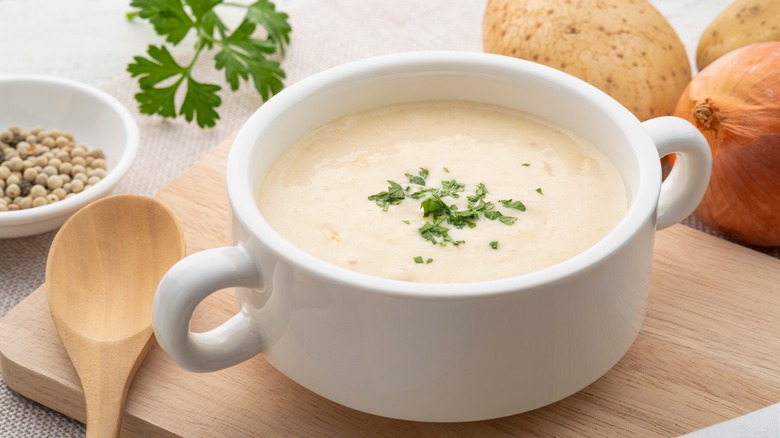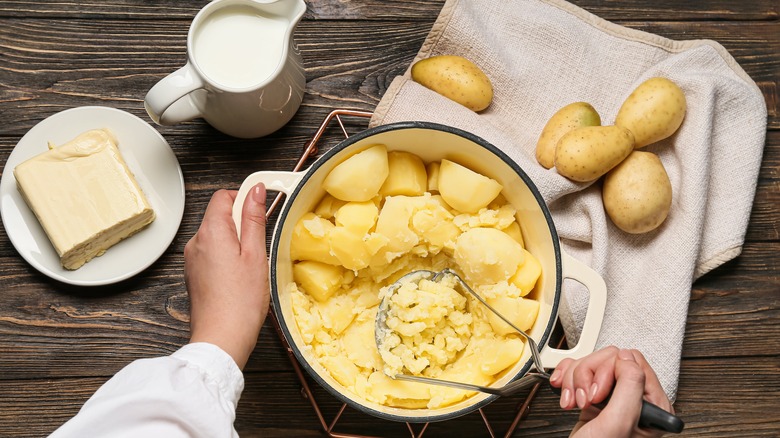The Major Reason Your Potato Soup Turned Out Slimy
There are so many ways to whip up a delicious pot of potatoey goodness. From a classic, creamy potato and leek soup to a lighter recipe that combines the starchy vegetable with cauliflower, the potato possibilities are endless. But there's one hard and fast rule for the best potato soup: balanced textures. Whether you prefer slurping a smooth spoonful or biting into a soft slab of potato, textural balance, and correct consistency are essential for perfect potato soup.
Similar to the problems people encounter when making mashed potatoes, it's easy for potato soup to turn gummy and unsatisfying. Potatoes are great for thickening soups and adding body with starchy chunks, but that same starch is also the culprit for a soup that feels more like paste than perfection. There is a reason for this starchy struggle: Improper potato preparation — we couldn't say that five times fast, even without a mouthful of slimy soup.
Like many of us chefs and home cooks, potatoes break down when overworked in the kitchen. While it might seem like merciless mashing would lead to a smoother soup, it actually has the opposite effect, creating a base that's more like gluey gunk. Overly mashed, super starchy potatoes are the major reason for slimy soup, so take special preparations to prevent unappealing textures. First, choose a balance of starchy and waxy potatoes, then treat them gently, and you can avoid putting hours of work into a bowl of starchy slime.
Tools and techniques for the best potato soup
Starch gives potato soup its signature creamy thickness, so how can it be the bad guy in a potato soup recipe? It's all about balance. Most potato soup recipes call for mashing some boiled potatoes into the broth to thicken the mixture. Now, there are tons of tips on how to expedite potato soup preparation, but the best way goes back to basics. You might be tempted to fire up a fancy kitchen appliance to do the mashing for you, but a tried and true potato masher is the way to go.
Processing potatoes too much gives them a gummy, sticky texture that will turn your soup into slime after adding liquids. If you slice the potatoes too thin, or pulverize them in a food processor, the veggies release extra starch that gives your soup a gluey consistency. High-intensity mashing methods like using blenders, hand mixers, or food processors overwork the potatoes, which breaks down their cells.
For the best, balanced texture, use a potato masher to gently mash some of the boiled potatoes directly in the soup pot. If you need to use a food processor, only blend about ⅓ of the soup in short pulses to preserve some of those tasty potato chunks. This method prevents the potatoes from releasing too much starch, keeping your soup smooth. So the next time you simmer a pot of potatoes, go easy on the mashing for the most spectacular spud soup.

